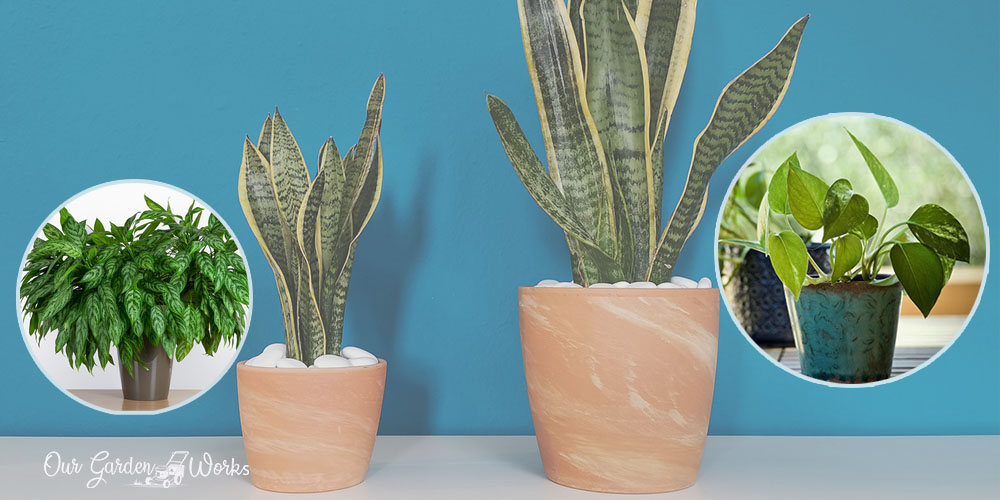Growing and caring for a plant has a lot of associated tasks. The preparation, planting process, and the much longer task – the maintenance. Though most plants need the watchful eye of a gardener, busy people can find solace in plants that don’t need drainage.
Part of plant maintenance is making sure that the plants are healthy by getting enough sunlight and water.
As a busy generation, tending plants becomes another chore. Sometimes, we forget to water them and when we do remember, we tend to over-water.
The good news is some plants can withstand drought for a long time and some can tolerate moist or wet soil. These plants include some species from common indoor and outdoor plants.
This post will share the plants that don’t need drainage and why they make the best plants to have in your garden.
We will also share the importance of drainage holes and how they affect the health of plants.
How Do Some Plants Survive In A Pot Without Drainage?
There are different kinds of plants with different kinds of needs. If you are someone who wishes to care for a plant that does not need drainage, you should look for either of the following:
- Moisture/water-loving plants: These plants are best cared for especially if you are someone who’s not sure when the amount of water is enough. They will not die even if it’s pooling and soaking in water so even without drainage, these plants won’t die on you.
- Drought-tolerant plants: Unlike water-loving plants, drought-tolerant plants are the ones that can live long enough without water. You can mist them from time to time and make sure that the soil is not dry and can sustain the moisture needed by plants for a long time.
9 Plants That Don’t Need Drainage And Their Best Features
Here are some of the plants that don’t need drainage at any stage of their growth. They need less care and can serve as either indoor or outdoor ornaments in your home.
1. Dumb Cane
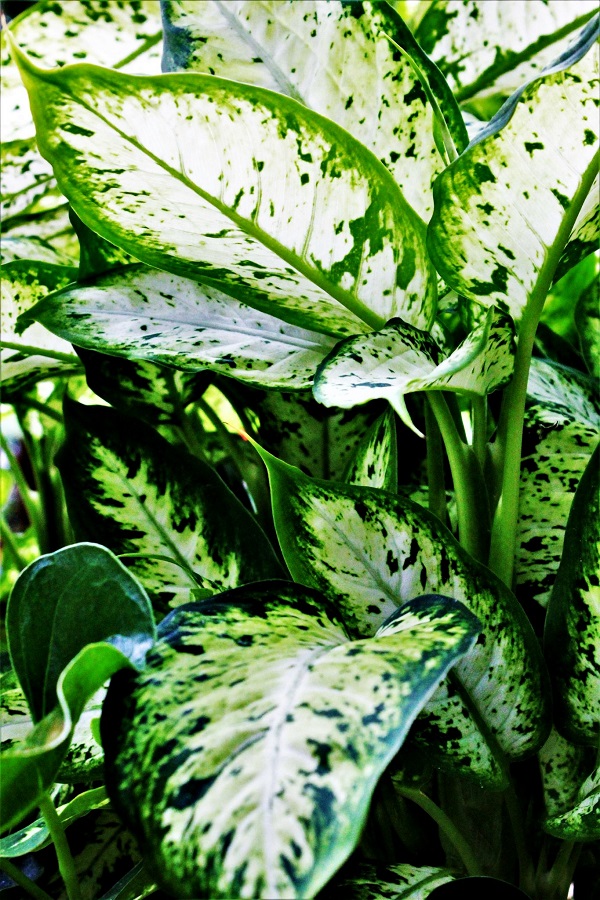
Dumb cane plants, also known as Dieffenbachia or leopard lilies, are tropical flowering plants that belong to the Araceae family.
These plants are common in North America and originate from Mexico, West Indies, and Argentina.
Dumb cane is easy to grow because it can live in different levels of humidity and light. It loves wet feet, and good drainage is the least of its growing requirements. It’s also not high maintenance and won’t cause problems for those forgetful gardeners.
Dumb canes are good house plants that can live for more than two years. Its leaves have flecks and white spots and its straight stems can grow up to six feet, which makes it an attractive indoor plant.
However, be careful in placing them indoors because they are poisonous and might cause harm to curious kids and pets.
2. Epipremnum Aureum (Pothos)
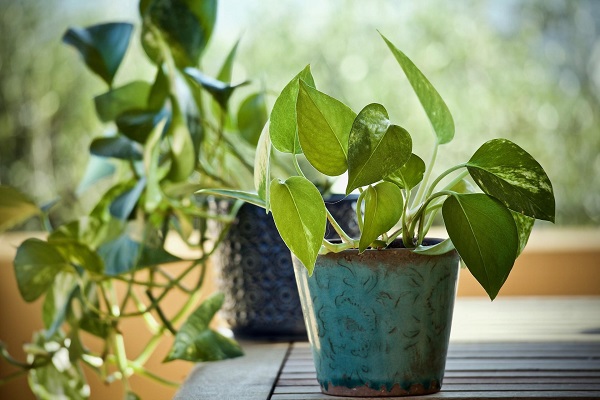
Epipremnum aureum, also known as money plant, is a common indoor plant that also doesn’t need drainage.
It is popular in tropical and polar regions but is now naturalized worldwide. Other names include devil’s ivy or devil’s vine because this plant stays green for a long time and is impossible to kill.
Epipremnum aureum can grow up to 10 feet with heart-shaped leaves and long vines. It can live in places with low to bright lights but not with direct sunlight. It can survive long periods without water and prefers dry soil.
It is better left underwatered than being too wet since it’s one of the things that can kill this almost impossible-to-kill plant.
You may water this plant when you notice that the soil is dry. Watering half of the soil should be enough for warmer months and full for the colder months.
One great thing about this plant is it will be evident if it needs water through its wilting leaves. Another best thing about this plant is it is proven to be a natural air purifier.
3. Snake Plant

Snake plants or Dracaena Trifasciata are native to tropical areas of West Africa. It has many names, including mother-in-law’s tongue, viper’s bowstring hemp, and Saint George’s sword.
This evergreen plant has upright blade-shaped leaves which can grow up to 6 inches to 6 feet. It’s also unique because it uses a different kind of photosynthesis called Crassulacean acid metabolism (CAM) which allows it to survive a long time without water.
You can water snake plants once every two to six weeks. Since it thrives more in dry environments, overwatering them might cause a problem.
They grow slowly, which makes them one of the best desk or table plants inside your office or home. Like the money plant, it is also known to be a natural air purifier.
4. Spider Plant
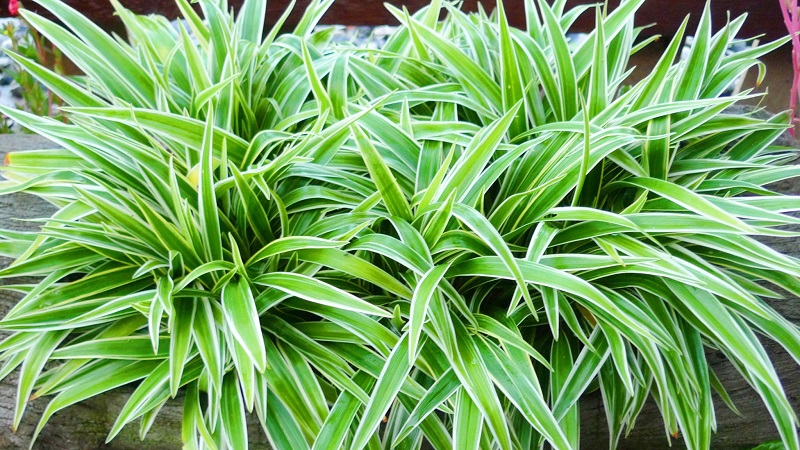
Chlorophytum Comosum or spider plant is another evergreen flowering plant that can grow in warm and humid environments. It only needs water once a week or if the soil is at least 50% dry. Hence, no need for drainage.
Like dumb canes and snake plants, spider plants can live more than two years. It is native to some areas in Africa, particularly in the tropical and southern parts.
They are also called ribbon plants or spider ivy because of their long narrow leaves. If planted in the ground, it can grow up to 24 inches but can grow more if planted in a hanging pot.
5. Chinese Evergreens
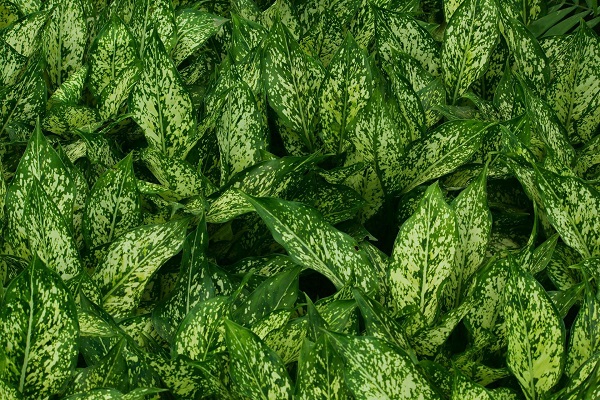
Chinese evergreens are flowering plants that originated from tropical regions of Asia and Papua New Guinea.
These perennial plants’ stems can either grow upright or lie along the surface of the ground. Its leaves are like elongated blades, usually with a mixture of silver and green colors. Its small flowers are borne in inflorescence on a fleshy stem.
It can grow in wet areas where the soil is full of moisture but not to the point of flooding/drowning. Hence, drainage is not needed at all. Ideal watering is once a week or when you observe that the soil becomes too dry.
6. Rough Horsetail

Rough horsetail, also known as scouring rush or snake grass, is a type of fern that looks like a small bamboo. Its scientific name is Equisetum hyemale. It is also a perennial plant that originated in Europe, Asia, and North America.
Rough horsetail grows on soil that has a sandy or coarse texture. It is often used as a marginal plant in a water garden due to its love for moisture.
It can also grow underwater so drainage is not an issue. Rough horsetails are usually medium to dark green stalks without leaves that can grow up to 5 feet tall.
Aside from being a versatile plant, it is considered medicinal. It can help with diuresis and is used for STI (sexually transmitted infection) treatments.
7. Schefflera
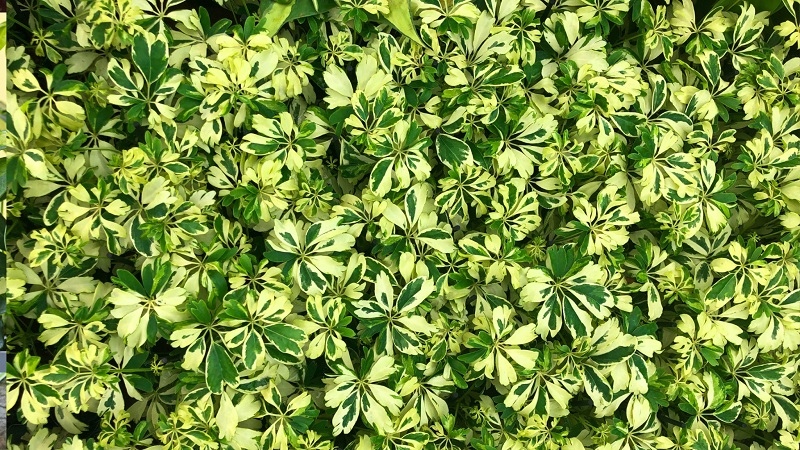
Schefflera is a large group of flowering plants with at least 600 to 900 species. Two species are commonly grown as house plants which are the umbrella tree (Schefflera actinophylla) and the dwarf umbrella tree (Schefflera arboricola).
Schefflera varieties can grow from 13 to 65 ft (~4 to 20 meters) tall. The umbrella tree variety has a palmate leaf with a medium green color and seven leaflets.
On one hand, the dwarf umbrella tree has at least 7 to 9 shiny green-colored leaflets which are smaller in size.
Unlike the other plants listed above, this one needs to be watered regularly. They need care, especially in their growing season and the leaves need frequent misting.
You can water this plant again once the soil in the pot dries out, but water sparingly during winter. An indication of overwatered Schefflera is when its leaves start to drop and become yellow.
8. Crotons
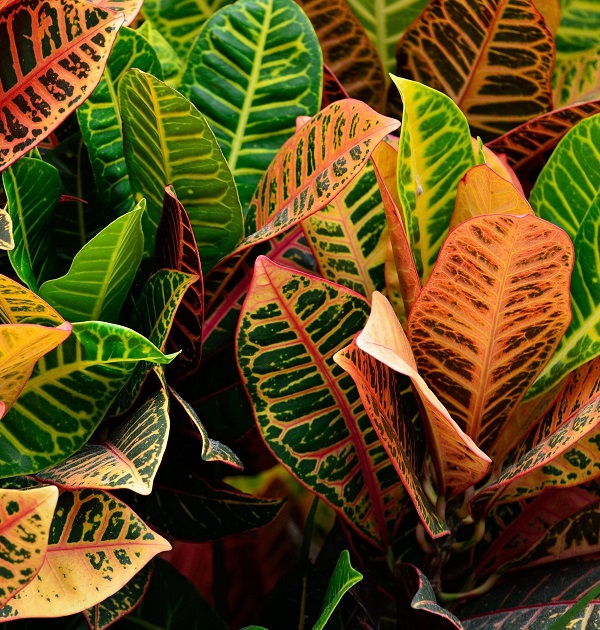
Crotons are plants that can be grown in warmer places. They are usually used as house plants and as an enhancer for floral arrangements due to their eye-catching leaves.
This plant has a lot of species and is native to Southeast Asia. It has different shapes and colors of leaves and can grow up to 10 feet tall like Petra and Zanzibar.
There are croton species that are smaller which are the ones used as home ornaments like the Mammy Croton (though other large species can be grown on small indoor pots too).
Crotons are easy to grow and since they are abundant in the wild, they are not expensive. They can be grown under the full sun but can also grow beautifully under shade. They are common in tropical countries. Cold temperatures can cause frost damage on crotons but they recover fast.
Since this plant is native to tropical areas, croton loves water. It prefers lukewarm water to grow better but avoids soaking it in soggy or wet soil.
If the tip of the leaves turns brown, it means that it is not getting enough nutrients from the soil so make sure to fertilize and check if the roots are drawing in water.
9. Cordyline
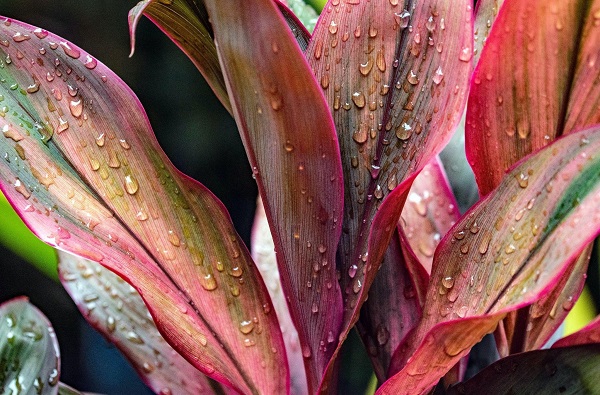
Cordyline has fifteen different species of flowering plants. It is native to New Zealand, Australia, Asia, and Polynesia. It is considered ornamental because of its bold, architectural appearance.
The leaf color varies depending on where the cordyline is planted. If under the full sun, the leaves are green, but if under the light shade, it can be dark red or purple foliage, or with yellow, pink, or white stripes.
It can grow from 2 to 4 feet tall and blooms either white, lavender, or pink flowers during summer.
Cordyline should be watered regularly until fully grown. Once mature enough, it can tolerate long periods of dryness so it won’t need drainage at all.
Are Drainage Holes Essential For Your Plants?
The simple answer is – it depends. Some plants can live in wet environments, while some are drought-tolerant.
Unique plant species do not fall on either of the two. These are called succulents. These include:
- Jade plant.
- Burro’s-tail.
- Echeveria elegans.
- Aloe vera.
- Bunny ears cactus.
So, if you are planning to grow plants that need minimal care and have a high rate of survival, here are a few things to remember:
(1) Choose the best plant for you: Consider the space, temperature, and climate in your location, and your availability – since the frequency of you watering the plants will also depend on your available time.
(2) Identify the correct pots to use: The correct size of the pot is important in growing non-drainage plants. If you have a small plant, using large pots may result in drowning the roots. Even water-loving plants can drown if they are swimming in water.
To improve soil drainage, you may create a drainage layer using sand, perlite, rocks, or pebbles for this.
(3) Know when to water your plants: Check the water level that each plant needs to survive. Every plant has a preference. Shallow-rooted plants are prone to overwatering and deep-rooted plants need deep watering to ensure that the moisture is absorbed well.
Final Thoughts
The plants that don’t need drainage are either water-loving or drought-tolerant. Discover their watering preferences to ensure that you are giving them what they need to thrive. Notice how they react in high humidity and low humidity by using a portable humidifier or placing the plants in the bathroom.
Plants that don’t need drainage are low-maintenance and ideal options for busy individuals who are green thumbs at heart.
We hope that this post helped you find plants that are not picky when it comes to soil drainage.
If you find this post helpful, please share it with your friends and let us know which of the plants above you chose to grow in the comment section below.
